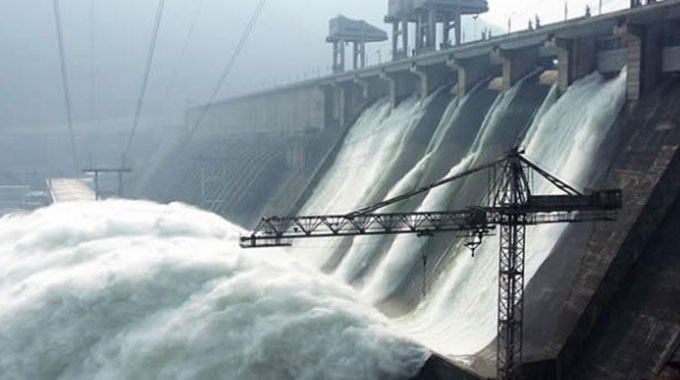
Oliver Kazunga, Senior Business Reporter
ELECTRICITY generation at Kariba Hydropower Station remains constrained despite the dam level rising by 97 centimetres between January and March this year, data from the Zambezi River Authority (ZRA) shows.
The authority, which is a bi-national organisation jointly owned by the governments of Zimbabwe and Zambia is mandated to manage Kariba dam and develop additional water storage infrastructure along the shared portion of the Zambezi River located along the common border between the two sister republics.
In a statement released this week, ZRA chief executive officer Engineer Munyaradzi Munodawafa attributed the increase in the lake level at Kariba to the improvement in the inflow from the Upper Kariba Catchment.
“As of the 27th March 2020, the recorded Lake level at Lake Kariba was 477,64 meters, signifying 14,86 percent live storage or 9,63 Billion Cubic Metres (BCM) of usable storage with the lake being just over two metres above the Minimum Operating Level (MOL).
“However, this recorded volume of stored usable water is 60 percent lower than that recorded on the same date last year at a lake level of 480,73m with 24,16 BCM or 37,28 percent usable storage with the lake being 5m above the MOL,” he said.
The water level at Kariba is mainly influenced by the inflows from the Zambezi River and its tributaries located in the Kariba Catchment.
“During the period October 2019 to mid-March 2020, the total inflow into the lake stood at 10,54 BCM when the historical average for this period is no less than 14,39BCM.
“The below average inflow recorded to date under the 2019/20 rainfall season accounts for the low water levels that continue to be recorded at Kariba,” said Eng Munodawafa.
ZRA has allocated 22BCM to be shared equally between Kariba Hydropower Station and Chivuma Power Station on the Zambian side, effectively limiting the combined electricity generation output to an average 550MW or 275MW for each of the two power plants.
Eng Munodawafa said ZRA has maintained the water allocation for the remainder of the 2020 period in the wake of below average lake inflows under the 2019/20 rainfall season in an effort to ensure build up the reservoir storage.
He said his organisation would continue to monitor the hydrological situation in the Kariba Catchment and water levels at Kariba dam.
In August last year, the Zimbabwe Power Company (ZPC) threatened to decommission Kariba Hydropower Station in the wake of fast dwindling water levels, which at that time stood at 478m and power production was expected to cease when water levels get to 475m.
Kariba, the country’s major power station has an installed capacity of 1 050MW.
ZPC indicated on its website that as of yesterday, the country’s largest power plant was generating 300MW.
Zimbabwe requires an average 1 400MW of power daily in summer and 1 600MW in winter and as of yesterday the country was generating at total of 574MW from all its power plants. — @okazunga.
